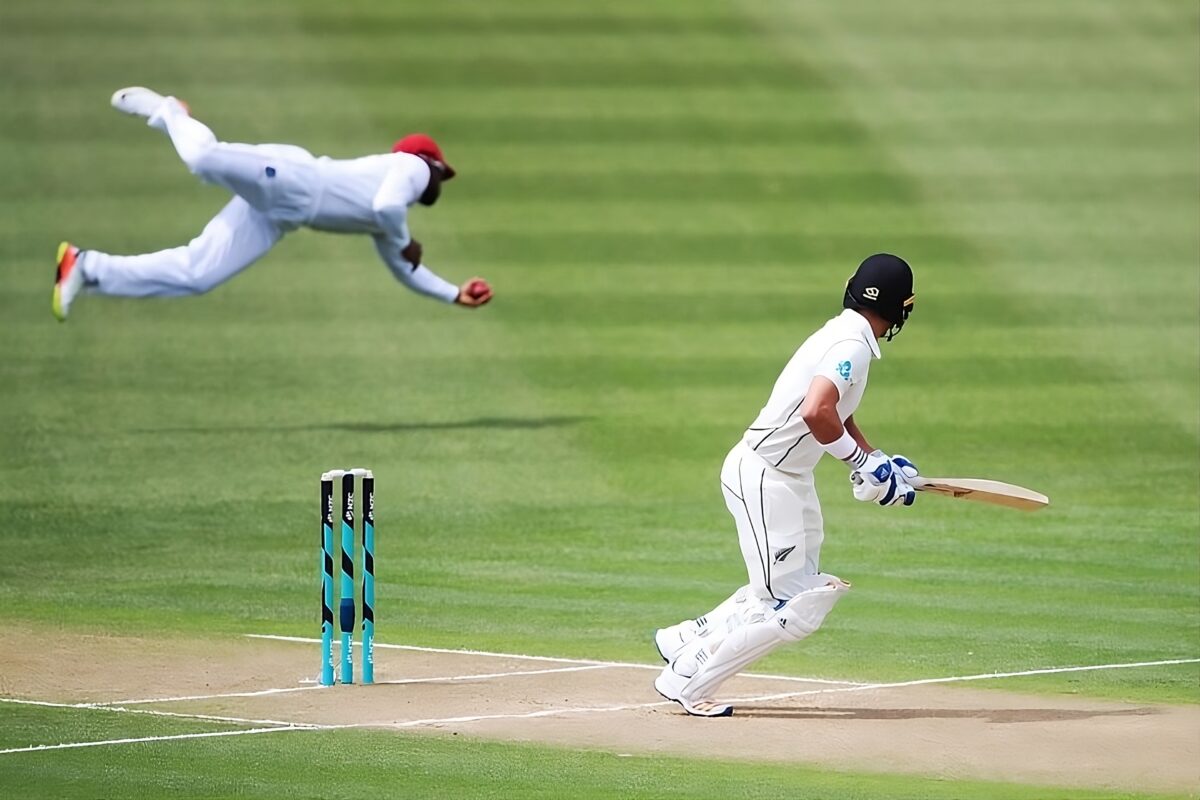Cricket Outs Explained: Explore the Different Types of Dismissals

Cricket, a game cherished worldwide, is known for its intricate rules and thrilling plays. One of the fundamental aspects of cricket is the concept of “outs” or “dismissals,” which play a crucial role in determining the course of a match. For fans, understanding the different types of dismissals not only adds depth to watching the game but also provides insights into cricketing strategies and skills. In this guide, we will explore the types of outs in cricket, from the most common to the rarest forms.
Understanding Cricket Dismissals
In cricket, a batsman is considered “out” or “dismissed” when they lose their wicket, bringing an end to their innings. Dismissals are pivotal to a team’s defense and often determine the flow of a match. Each type of dismissal requires unique skills from bowlers, fielders, or the batsman, adding layers of strategy to the game. Here, we delve into the various methods of dismissal recognized in cricket.
Bowled – The Classic Dismissal
One of the most iconic ways a batsman can be dismissed is by being bowled. This occurs when a bowler delivers the ball, and it strikes the stumps, dislodging the bails. It’s a testament to the bowler’s skill, precision, and ability to outwit the batsman. Bowled dismissals often showcase the bowler’s ability to read the batsman’s movements and exploit any weaknesses in their stance or technique.
Caught – Most Common Form of Dismissal
Being “caught out” is the most frequent dismissal in cricket, and it occurs when the batsman hits the ball in the air, and a fielder catches it before it hits the ground. This type of dismissal can involve any player on the field, including the wicketkeeper and even the bowler, if the ball is returned quickly. Caught outs display sharp fielding and impeccable timing, often reflecting an effective strategy to pressure the batsman into risky shots.
Leg Before Wicket (LBW)
The LBW, or Leg Before Wicket, is one of the more complex dismissals in cricket. It happens when the ball strikes the batsman’s leg or body instead of the bat and would have hit the stumps if not intercepted. The LBW decision is subject to several conditions, including the position of the ball and batsman’s stance. This dismissal requires a keen understanding of the rules, as it’s often contested and reviewed in high-stakes matches.
Run Out – A Test of Speed and Precision
A run-out occurs when a fielder uses the ball to break the stumps while the batsmen are attempting to score a run. This dismissal is a test of speed, precision, and quick reflexes from both the fielders and batsmen. Fielders with a powerful throw and quick decision-making can frequently create run-out opportunities, catching the batsman short of the crease.
Stumped – A Wicketkeeper’s Delight
The stumping is a wicketkeeper’s specialty. This dismissal occurs when a batsman steps out of the crease to play a shot, misses the ball, and the wicketkeeper quickly removes the bails. Stumpings are often seen in limited-overs cricket, where batsmen are more aggressive, and it requires exceptional timing and quick reflexes from the wicketkeeper to execute this move successfully.
Hit Wicket – A Rare but Interesting Dismissal
A hit wicket dismissal is relatively uncommon and happens when a batsman accidentally hits the stumps with their bat or body after delivering a shot or while setting up for one. This can happen during an aggressive shot or even while trying to avoid a bouncer. It’s an unfortunate yet fascinating type of dismissal, as it’s entirely the batsman’s responsibility to avoid hitting their own stumps.
Obstructing the Field
The “obstructing the field” dismissal is unusual and penalizes a batsman if they deliberately interfere with a fielder’s attempt to make a play on the ball. This dismissal is rare as it requires the batsman’s actions to be intentional in obstructing the fielders.
Handled the Ball – A Rare Dismissal
The “handled the ball” dismissal, though now included under obstructing the field, was previously a separate mode. It occurred when a batsman intentionally touched the ball with their hand to prevent it from hitting the stumps. Although rare, it has happened a few times in cricket history and demonstrates the strict adherence to fair play within the game.
Timed Out – When a Batsman is Late to the Crease
A batsman can be “timed out” if they fail to arrive at the crease within three minutes after the previous batsman was dismissed. This type of dismissal is very rare but can happen if there’s a delay in the batting order. It emphasizes the importance of readiness and awareness in the game.
Retired Out – Voluntarily Leaving the Field
A batsman can voluntarily leave the field and be considered “retired out,” which differs from “retired hurt,” where an injury is the cause. In retired out dismissals, the batsman has no intention of returning to play, which is often pre-decided or a strategic move. While infrequent, it occasionally happens in the shorter formats of cricket.
Hit the Ball Twice – An Uncommon Dismissal
If a batsman hits the ball twice with their bat or body intentionally, it results in a “hit the ball twice” dismissal. This rule prevents the batsman from striking the ball a second time for any reason other than protecting their wicket. It is a rare dismissal, emphasizing the batsman’s responsibility to play within the rules.
The Role of Umpires in Deciding Outs
Umpires play a vital role in determining dismissals, especially in close calls like LBW, caught, or stumped. With the advent of technology, tools such as the Decision Review System (DRS) and UltraEdge provide more accuracy in controversial decisions. Umpires often consult these technologies to ensure fairness and accuracy, allowing them to make precise decisions in real-time.
Differences Between Test, ODI, and T20 Dismissal Trends
The frequency and types of dismissals can vary widely between formats. In Test cricket, where patience is key, dismissals like bowled and LBW are more common as batsmen tend to play defensively. In contrast, the fast-paced T20 format often leads to more caught and stumped outs, as batsmen take aggressive risks to score quickly. Understanding these trends offers insight into each format’s strategic approach.
The Impact of Different Dismissal Types on Cricket Strategy
Each type of dismissal has a direct impact on a team’s strategy. For instance, bowlers may bowl full-length deliveries to increase chances of bowled or LBW dismissals in Test matches, while focusing on short balls to encourage caught outs in T20s. Field placements, bowler selection, and overall match tactics are often influenced by expected dismissal types, making it a key component of cricket strategy.
Famous Dismissals in Cricket History
Over the years, several dismissals have left an indelible mark on cricket history. Iconic moments like Shane Warne’s “Ball of the Century” or MS Dhoni’s lightning-quick stumping have become part of cricket lore. These memorable outs not only affected the games but have also defined careers, adding to the allure of dismissals in cricket.
Conclusion
Dismissals are integral to the game of cricket, shaping its flow and outcome. Each type of out brings a unique challenge for both the batsman and fielding side, making cricket a game of skill, strategy, and split-second decisions. By understanding the various types of outs in cricket, fans can gain a deeper appreciation for the complexities and excitement that make cricket a global sport
FAQs
- What is the rarest type of out in cricket?
The “obstructing the field” or “hit the ball twice” dismissals are among the rarest, as they require specific, uncommon actions from the batsman. - Which type of dismissal occurs most frequently in cricket?
The “caught” dismissal is the most common, as it results from aggressive batting or risky shot selection. - How many ways can a batsman be dismissed in cricket?
A batsman can be dismissed in eleven different ways, covering both common and rare methods of getting out. - Can a batsman be dismissed without facing a ball?
Yes, a batsman can be dismissed without facing a ball through methods like run-out, obstructing the field, or being timed out. - What are the roles of fielders and wicketkeepers in different types of outs?
Fielders play crucial roles in run-outs and caught outs, while wicketkeepers are instrumental in stumpings and caught-behind dismissals.









